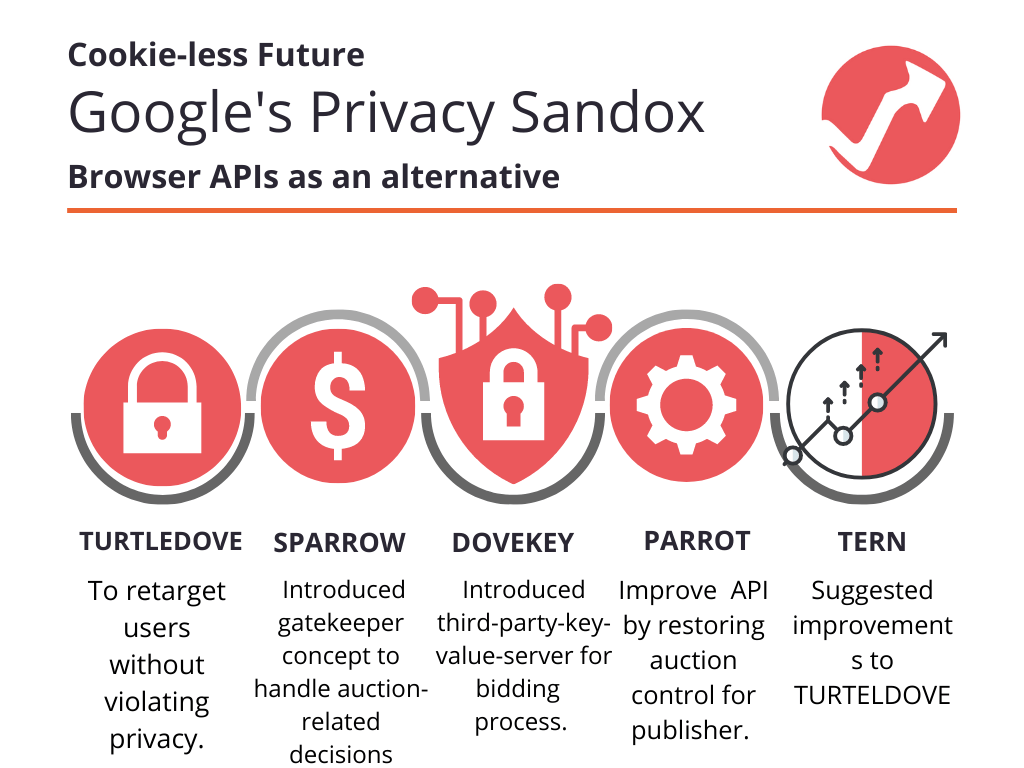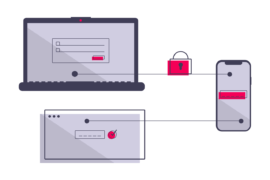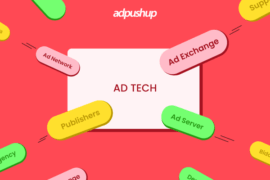As the death of the third-party cookies is approaching, Google is pitching its Privacy Sandbox as the alternative.
The rise of first-party data has introduced hot topics like privacy sandbox, TERN, DOVEKEY, TURTLEDOVE, and more.
In this article, we’ll break down everything that publishers need to know about TERN.
Before we dive into what TERN is, it’s worth getting some background on sandboxes.
What is a Sandbox?
Sandboxes are secure environments on a computer with minimal access permissions to the rest of the device. A browser, just like any app on your device, works as a sandbox for preventing other software from accessing its data.
In simple words, it limits access to a computer’s hard drive, camera, or other apps without first gaining permission.
What is Privacy Sandbox?
Due to growing privacy concerns, Google was under a lot of pressure and introduced Privacy Sandbox as a response. Google says that they want to create a certain advertising standard for personalized ads while respecting user privacy.
Chrome has proposed creating a sandbox for the user browsing data within the browser. Through the privacy sandbox, Google will limit advertisers, publishers, and ad tech vendors to process user information through cookies or fingerprinting methods.
Chrome’s Privacy Sandbox is an umbrella term for all things that can enable a cookieless advertising future. Google’s objective is to replace cookies with browser-based standards that will prioritize user privacy.
To enable this, Google will update the Chrome browser with features to handle key advertising mechanisms such as attribution, tracking, and fraud detection.
Regardless of adoption of Privacy Sandbox, Google wants the ad tech ecosystem to be involved and share more ideas to improve the cookieless advertising standards.
Likewise, some ideas have been proposed by different companies like NextRoll, Criteo, and Magnite.
Let’s do a quick breakdown of each:
API proposals made under Google’s Privacy Sandbox Initiative:

1. TURTLEDOVE, proposed by the Google Chrome team
TURTLEDOVE stands for Two Uncorrelated Requests, Then Locally-Executed Decision On Victory. Proposed in January 2020, it is meant to provide advertisers and publishers a way to retarget users without violating their privacy.
Read more: What is TURTLEDOVE?
2. SPARROW, proposed by Criteo
SPARROW (Secure Private Advertising Remotely Run On WebServer) is a turnaround for TURTLEDOVE limitations and is proposed by Criteo. It suggests that rather than putting the browser in charge, a third-party (gatekeeper) should be taking care of auction-related decisions. This proposal builds upon TURTLEDOVE and expands advertising use cases for the industry.
SPARROW introduced some additional capabilities to protect user data while ensuring that the ad tech industry can function in a more controlled and transparent manner.
Read more: What is SPARROW? How does it Advance the Case of Privacy Sandbox APIs?
3. DOVEKEY, proposed by Google Ads
DOVEKEY was introduced to respond to SPARROW limitations in September 2020 – addressing some of the major shortcomings of Criteo’s proposal. The core feature of DOVEKEY is a third-party-key-value-server that is used to facilitate TURTLEDOVE’s bidding and auction process.
Read more: What is DOVEKEY?
4. PARROT, proposed by Magnite
PARROT (Publisher Auction Responsibility Retention Revision of TurtleDove) is one of the APIs in the Google Privacy Sandbox. Submitted by Rubicon Project, it is a recent development in the TURTLEDOVE family and aims to improve the API by restoring the control of the auction with the publisher.
Read more: What is PARRROT? How does it Advance the Case of Privacy Sandbox APIs?
5. TERN, proposed by NextRoll
NextRoll, an adtech company, proposed TERN (TURTLEDOVE Enhancements with Reduced Networking). The goal of TERN is to introduce improvements to TURTLEDOVE. More about this is discussed below.
6. FLEDGE, proposed by Google Chrome:
FLEDGE stands for First Locally-Executed Decisions over Groups Experiment. This privacy sandbox API puts into practice the proposed elements in TURTLEDOVE and other proposals that followed it.
FLEDGE supports the major principles of TURTLEDOVE including, concepts of Gatekeeper from SPARROW, the separation between SSPs and DSPsthe concept of interest groups, Key-Value server from DOVEKEY, and in terms of functions, as proposed by PARROT and TERN.
Read more: What is FLEDGE in the Privacy Sandbox?
About TERN:
NextRoll, a marketing technology company, introduced TERN (TURTLEDOVE Enhancements with Reduced Networking) as a proposal under Google’s Privacy Sandbox.
The company has played a leading role in the conversation around cookieless advertising and collaborates with industry leaders to create privacy-oriented and transparent online experiences.
TERN aim to improve TURTLEDOVE in the following ways:
- Clarifying the necessary inputs to enable participation in an auction
- Providing better options on how to deal with multiple ad formats
- Enabling brand safety for both publishers and advertisers
- Eliminating threshold needs on interest group sizes
- Supporting product recommendation use cases
- Allowing publishers to retain control of auction
- Specifying frequency capping and optimization
- Streamlining the data that flows through SSPs
- Creating a mechanism for trackable metrics
- Improving the time for impression delivery
- Supporting third-party tags functionality
- Reducing networking overhead
How is TERN different from TURTLEDOVE?
1. Faster ad delivery:
According to NextRoll, recency is one of the most important factors that impact the efficacy of ads. TERN authors observed that ad requests that come ten minutes after a user has been on site produce lower bids than requests that come faster. The late ad delivery significantly decreases the publisher’s revenue.
Hence, there’s a need for ads to be rendered faster. TERN combines writing web bundles for ads along with interest groups. This facilitates faster delivery of ads (immediately after browning away from the site).
2. Eliminate minimum interest group sizes
TERN eliminates minimum interest group sizes. Here’s an excerpt from TERN documentation published on Github:
“We also write multiple ad web bundles at a time and allow specifying the sizes (and/or aspect ratios) at which an ad bundle knows how to render itself. This is necessary because we do not know the size of ad slots that will later be up for auction on a publisher’s site. When it comes time to perform the on-device auction, we can eliminate the evaluation of ads that are not compatible sized. If the browser itself has or gains awareness of the ad formats being auctioned (e.g., IAB standard ad units), it could quickly do this itself.”
3. Add multiple interest groups
Instead of adding one interest group, TERN can add multiple, but each needs its own Time to live (TTL). NextRoll expects the browser to record a user’s time zone before adding them to an interest group and derive value from it.
TURTLEDOVE also allows addition of multiple interest groups to the browser but it asks for multiple calls and steps that are unnecessary.
4. Multiple ad formats
Similarly, TERN enables the rendering of multiple ad formats by allowing publishers to specify the ad sizes, aspect ratio, among other details. This is important because you never know the size of ad slots that’ll later be available for auction on a publisher’s site.
5. Ad categories
Ad categories can be declared via TERN, which helps publishers decide whether they want those ads on their site or not. SSPs can also have an ad category for their creatives, which will enable a smarter integration of publisher brand safety between SSP and the publisher.
6. Refined Bidding Signals:
TERN can be used to refine bidding signals. Examples include metadata about advertiser, campaign, or the ad itself. Furthermore, TERN enables several other metadata that will support bidding functionality feed into the aggregate reporting API.
7. Preserving third-party tag functionality
As of now, TURTLEDOVE doesn’t offer a mechanism for preserving third-party tags that are to be attached to ads. TERN suggests that reporting metrics mentioned by third-party scripts can be used in ARAPI (aggregate reporting API), but in a separate storage that what SSP or DPS may wish to track.
In closing
One thing is certain – Privacy Sandox proposals like TERN are the AdTech playground of the future, and Google is setting up goalposts to define the rules of the game. AdTech vendors, publishers, and advertisers should have one eye on the present and one eye on the future.
While there are a lot of uncertainties about the cookieless ecosystem, there are still ways for advertisers to make it work. One of the best methods would be embracing contextual targeting, and another is to focus on building audience segments that can work seamlessly with both the cookieless and cookie environment.
Publishers can increase first-party data through subscriber or log-in services, putting them ahead in the game. Working with an ad tech partner that offers an end-to-end platform will further help publishers weather the impacts to cookie reduction.
Frequently asked questions:
Q1. What is TERN?
TERN stands for TURTLEDOVE Enhancements with Reduced Networking – NextRoll, an adtech company, proposed it. The goal of TERN is to introduce improvements to TURTLEDOVE.
Q2. What is the Chrome privacy sandbox?
Privacy Sandbox is designed to keep ad delivery efficiency intact without the use of third-party cookies in Chrome.
Q3. How is TERN different from other privacy sandbox APIs?
TERN assumes that DSPs should bid directly into the browser. This is different from how ad-tech generally functions today.

Shubham is a digital marketer with rich experience working in the advertisement technology industry. He has vast experience in the programmatic industry, driving business strategy and scaling functions including but not limited to growth and marketing, Operations, process optimization, and Sales.







